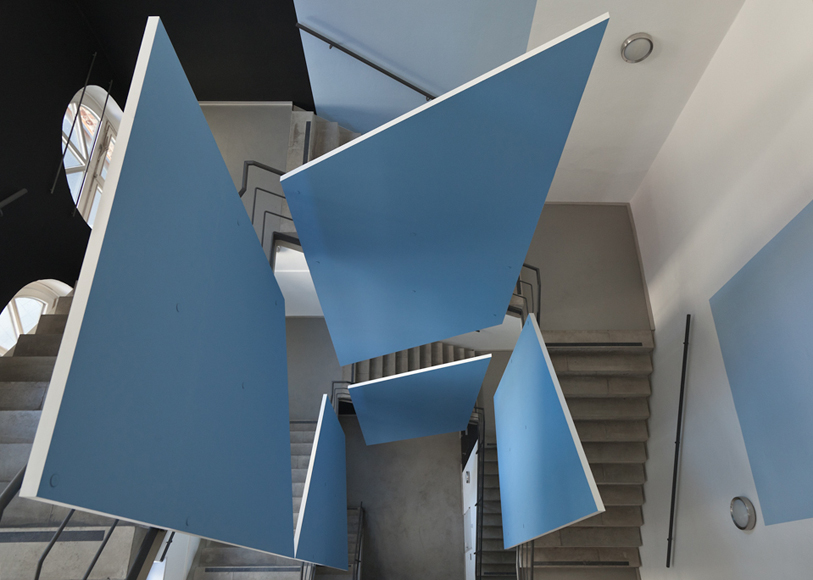Vertical motion in a spatial experience had in a stairwell. The angle of climb of the stair segments becomes a formal motif and defines the contours of the surface elements installed in front of the banisters. The variation of a reduced, elementary principle and the use of chromaticity that is equally as reduced produce references to tendencies in the early modern era of architecture, for example to the De Stijl artists and their geometric, abstract, functional aesthetic.
Another of the installation’s points of reference is the architect Bruno Taut. In his projects, he dealt with what was occasionally expressive chromaticity of an element of structuring space. Yet Taut was also interested in light. Thus, the two shades of grayish-blue used in the stairwell shimmer in different nuances of color depending on the incidence of light. The attempt to mingle light with space found expression in Taut’s “Glass Pavilion” presented as the Werkbund Exhibition in Cologne in 1914. The work’s title consists of a direct quote from the Glass Pavilion’s inscription: “Without a glass palace, life becomes a burden... Light penetrates all things in the universe, a crystal lives on.”
Material: sandwich panels, wall paint (black and 2 blues)




